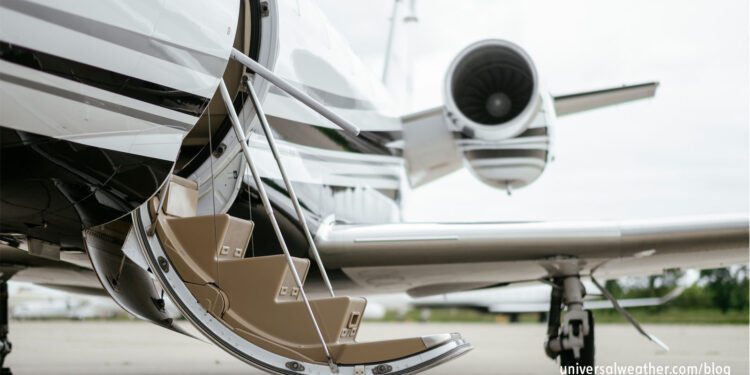Business Jet Ops to Kenya: Ground Handling

This is a post by author Victoria Swai. Victoria is a permits officer for Kilimanjaro Aviation Logistics Centre (KALC), a subsidiary of Universal Weather and Aviation, Inc. which is headquartered in Mwanza, Tanzania. Victoria is an expert on permits for the African region and can be contacted at victoriaswai@universalaviation.aero.
This business aviation blog post is part of a series on operating in Kenya and continues from our last article: “Business Jet Ops to Kenya: Airport Overview.”
When you conduct business aircraft operations to Kenya, it’s best to make ground handling arrangements well in advance. While larger airports are very well equipped in terms of General Aviation (GA) support, service, and credit, there are often limitations when operating to secondary locations in country.
The following is an overview of what you need to know when operating to Kenya:
1. Ground handling in Kenya
It’s important to let your ground handler know your type of aircraft, schedule, operator/crew/passenger information, and passenger status (i.e., VVIP or diplomatic), as well as all services and Ground Support Equipment (GSE) that your operation will require. All business aviation flights – private non-revenue and charter (non-scheduled commercial) – are handled the same with the only variance being the status of passengers (i.e., VVIP or diplomatic). Scheduled commercial airlines take priority for all airport services in Kenya with the exception of Wilson (HKNW), which is a GA airport with very few scheduled commercial flights), and the more advance notice for handling requests, the better. Be aware, also, that peak periods of commercial activity at major airports are typically 0600-1100 local and 1500-2300 local.
2. Handling process
Once a handling request has been received, your ground handler will begin making arrangements for airport slots (when needed), aircraft parking, and services. Your handler will also coordinate with the fuel supplier to ensure fuel delivery and credit is confirmed. Suggested lead time for handling requests is 72 hours for Airports of Entry (AOEs) and approximately one week if you’re operating to smaller domestic airports, especially if GSE needs to be repositioned to the airfield.
3. GSE
While AOEs in Kenya have a good selection of GSE, smaller airports have more limited options. If you’re traveling to outlying airports in Kenya, ground handlers can make arrangements, with sufficient lead time, to reposition required GSE. Be advised that fees will be involved for these services.
4. Schedule revisions
Schedule revisions will impact your handling arrangement. Permits may be affected if a schedule change is outside the validity window, and you may require airport slot revisions in the case of Nairobi (HKJK). In addition, your handler will need to organize changes to previously arranged parking and aircraft services.
5. Ground handling tips
When you operate to Kenya, it’s best to utilize a larger ground handling service provider with agents at outlying airports in the event travel is required to domestic airports in the country. Your handler should be able to arrange full credit with prior notice for all airport and 4th-party services. They’ll coordinate all ancillary support services – including local transport, in-flight catering, and additional security. Fees paid for services by the handler will be invoiced at a later time. Ground handling charges in Kenya are typically based on type of aircraft and the maximum takeoff weight. Handling cost quotes may be obtained at operator request.
6. Additional reading: Business Aircraft Ops to Kenya – Series Index
Note: Links will be updated as articles are published.
- Part 1 – Airport operations
- Part 2 – Ground handling
- Part 3 – Fuel, security, and additional services
- Part 4 – CIQ
- Part 5 – CIQ, documentation, and tech stops
- Part 6 – Permits and slots
- Part 7 – Flight planning, weather, and NOTAMs
- Part 8 – Hotels and local area
Conclusion
We recommend working with your ground handler early in the trip planning process if your operation to Kenya involves domestic legs. Lead times are longer for such operations, and additional considerations, including security and GSE planning, are often involved. Also, be aware that at all airports in Kenya, with the exception of HKNW, give scheduled commercial aviation priority, so arrangements for services should be made in advance to avoid delays.
Questions?
Later, we’ll discuss fuel, security, and additional services for Kenya and their impact on your trip.




